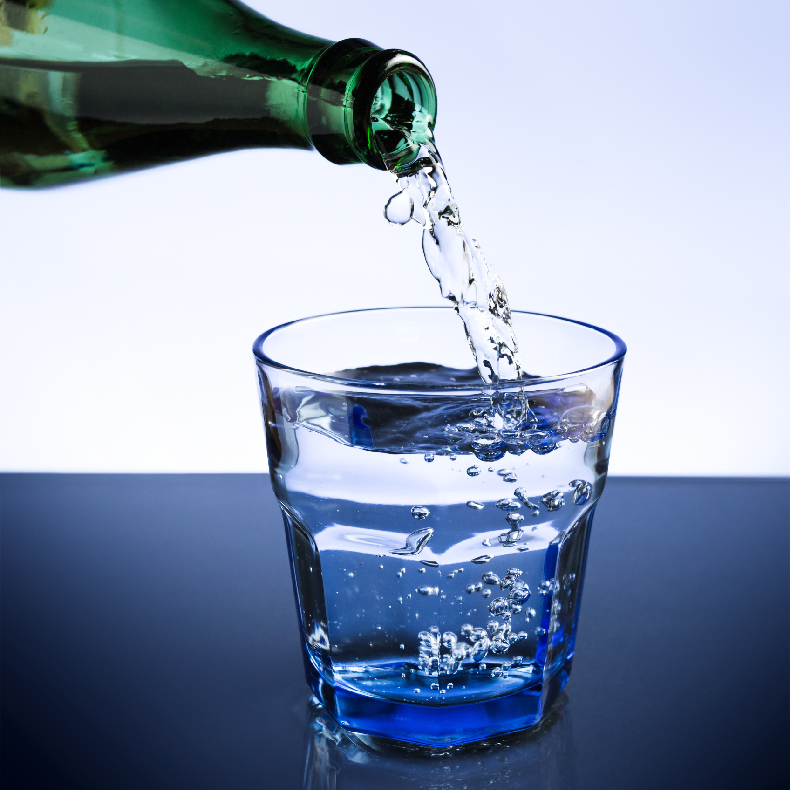From Prof. Dr. Birol SAYGI
Enjoy the wealth with every sip!
It is known that thermal waters have been used for hydrotherapeutic purposes in the Mediterranean region since the second century BC. However, the first epidemiological findings related to water consumption and health and digestion could only be reached in the twentieth century.
Mineral water is characterized by its content in minerals, trace elements and other components, its purity in its source and its healing properties. This characterization is officially accepted and documented after clinical and pharmacological examinations.
There are different water classifications made depending on the density of the chemical elements. Among these, the closest and relatively simplest approach to hydrological identification needs has been expressed in the classification of Marotta and Sica. The classification of Marotta and Sica is based on the dominant chemical elements resulting in biological and curative effects contained in mineral water, as can be seen from the following list:
An Evaluation that does not require detailed bacteriological analysis guides consumers in the selection of water that best meets their needs. In this context, the words "microbiologically healthy water" are sufficient. This term “microbiologically healthy water” does not mean that the water is sterile, but it does mean that there are no main indicators of pollution and that there is natural bacterial flora.
The label on the mineral water bottle indicates some basic rules for the proper storage of bottled mineral water: “It should be kept away from light and heat sources in a cool, dry, clean, and odorless place.” It is also useful to remind consumers of the following information that can be found on some mineral water bottle labels:
Water with very low mineral content constitutes 9% of the water on the market. Mineral waters with very low mineral content have a diuretic effect, so it is effective in lowering urinary tract stones; it facilitates the uric acid cleansing of the kidneys, it can be used; it is also effective in hypertension due to its low sodium content.
Water with low mineral content constitutes 65% of the mineral water on the market. These waters have effects that increase urine production; uric acid and ureic nitrogen (nitrogen) are effective in preventing stone formation in the kidney as they facilitate filtration and purification. It is also effective in the absence of gout, a metabolic disease caused by urate accumulation in the joints, as a result of the increase in uric acid level in the blood owing to its support of filtration and purification.


Medium Mineral Water Content and Their Benefits
Medium mineral waters constitute 20% of the mineral waters on the market. They are similar to low-mineral waters in terms of their manifestations and effects, but their diuretic effects are inversely proportional to the amount of dry residue.
Water Rich in Mineral Salts and Benefits
Water rich in mineral salts accounts for 6% of the mineral waters on the market.
Looking at the Biological Effects of Mineral Waters...
According to their biological activities, mineral waters can be classified into three groups as diuretic waters, cathartic waters and waters with anti-flogistic properties. Various and numerous studies are conducted on the results of drinking mineral water treatment in human groups with different age and health conditions within the framework of patients, clinic and epidemiological studies.
Waters with bicarbonate can neutralize acid secretion, accelerate gastric emptying, and trigger the release of gastric peptides (such as gastrin and endorphins). It is effective in hydrochloric-peptic hypersecretion and gastroesophageal reflux disease. Bicarbonate waters neutralize metabolic acidosis in decompensated diabetes.
Waters with sulfate stimulate intestinal motility and mainly induce chronic simple constipation; they have an osmotic effect and facilitate cholecystokinin (CCK) release due to the effect of sulphate on endocrine-paracrine system cells, enabling this activity to take place. For bile, bladder hypokinesia, biliary sand, waters with sulfates are used in post-cholecystectomy syndrome. The richness of cation Mg increases the colagogue, which stimulates bile flow to the duodenum owing to its relaxing effect on the Oddi sphincter and facilitates bile release. Waters with sulfate and bicarbonate are effective in diabetes. Especially after treatment with sulfurous waters, glycemia, polydipsia and polyuria decreased and insulin requirement decreased.
<p>Waters with chloride-sodium (waters with salt) stimulate intestinal peristalsis and intestinal secretion of water and electrolytes. They have a choleretic and cholagogue effect by increasing biliary secretion and bile entry to the duodenum. They are used in simple constipation, irritable colon, and biliary pathology.
Although calcium-rich mineral waters are used when calcium requirement increases (children, pregnant women, menopause, old age, osteoporosis), recent studies suggest that calcium can also prevent hypertension.
Magnesium waters are mainly cathartic (laxative); recent studies also show that they can prevent atherosclerosis (vascular stiffness). They are useful in pregnancy, birth and gynecological pathologies such as premenstrual syndrome, postmenopausal osteoporosis. Iron waters are effective in sideropenic anemia and hyperthyroidism.
Carbon dioxide is advantageous because it prevents the oxidation of mineral water; limits bacterial growth because it has bacteriostatic properties, facilitates digestion by increasing mobility and gastric secretion, and provides more dehydrating properties due to its mild anesthetic effect on water taste buds.
In recent years, the increase in the consumption of processed foods has led to a decrease in daily average magnesium intake from 410 to 300 mg and below: A significant part of the populations have receiving below the recommended quantities. Therefore, chronic latent magnesium deficiency may be at risk. Regular consumption of magnesium-rich mineral waters can make an important contribution to meeting magnesium need. Since it is determined that magnesium absorption and retention increase even more when mineral water is consumed with a light meal, it is especially recommended to consume mineral water with food to benefit from the meal effect on magnesium bioavailability.
Mineral waters have antioxidant, hypocholesterolemic activity and may affect calcium metabolism. For example, sulfurous mineral water was found to have antioxidant properties in both rabbits and rats and to have a positive effect on the oxidative defense mechanism, respectively. Various studies have also shown that magnetic-sulphate-sulphur spring mineral water has a very good hypocholesterolemic activity and a protective effect against oxidative lipid damage. Drinking water containing calcium increases serum calcium and prevents parathyroid hormone secretion. However, the results vary depending on the type of water mineralization.
It should be noted that there are very few studies on the biochemical effects of mineral waters. In the study, it was suggested that salt-rich mineral waters in mice increased the conversion of cholesterol to bile acids and then its secretion. Similar studies in humans have reported significant effects on lipoprotein levels of various mineral waters, mostly gaseous bicarbonate mineral waters.


Adequate water consuming and especially drinking natural mineral water are associated with higher diet quality. In the study conducted in France, it was observed that women who consumed more mineral water gravitate toward healthier food options, thus having higher diet quality and less energy-intensive diets (e.g., fruit and vegetable weighted and less artificial sugar). In addition, the study conducted in the French population showed a positive relationship between micronutrient intake and water consumption. The “National Health and Nutrition Review Study” in the US also proved a positive relationship between total water, plain water, and dietary and serum minerals, vitamins, and carotenoids in foods. Diet may delay the occurrence of risk factors for chronic and CVD, especially in postmenopausal women. For this reason, water consumption as a basic component of the diet should be taken into consideration. In the study in which subjects showed a significant decrease in fasting serum glucose concentration, this decrease shows the relationship between lipid metabolism and glucose and suggests that consumption of water rich in carbonated sodium studied may play a beneficial role in the prevention of CVD and metabolic syndrome.
There is no doubt that mineral water drinking therapy has beneficial health effects on humans. Several biochemical studies have also been published to support these findings. However, biochemical reports are still quite limited to provide any scientific theory to address the impact of thermal hydrophyn on health, and it is certain that more scientific studies are needed.
In addition, the fact that some adverse health effects are observed during mineral water drinking therapy cannot be ignored and this issue should be investigated further with a biochemical approach. The data in the literature show the disadvantages of natural mineral waters for human consumption as well as their advantages. In general, it is more satisfactory in terms of organoleptic aspects because natural mineral water is pure at its source and is not subjected to disinfection processes.
Natural mineral water -especially those made of polyethylene terephthalate (PET) - may contain residues released from bottling vessels. Storage conditions, especially mineral waters bottled with this type of material, should be carefully created. Storing bottled mineral water in unsuitable places, at unsafe temperatures and under unsuitable hygienic conditions may cause the development of microorganisms harmful to human health or the loss of organoleptic properties of mineral water when it is at its source. As a matter of fact, it has also been shown that plastic bottles can support microbial growth when storage conditions are not suitable.